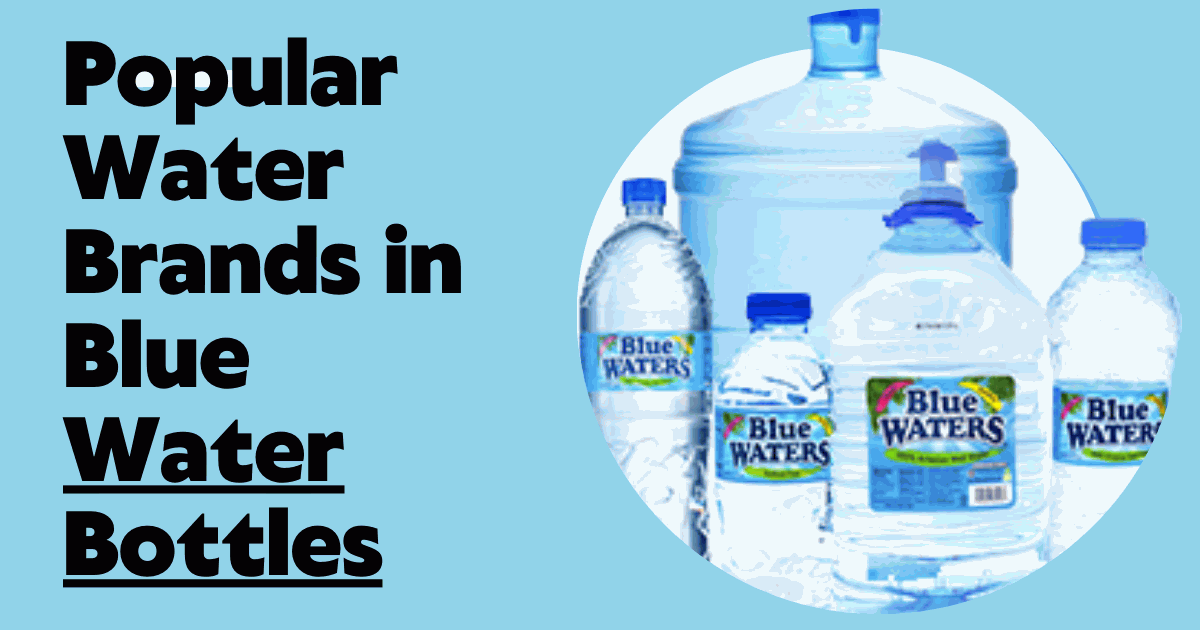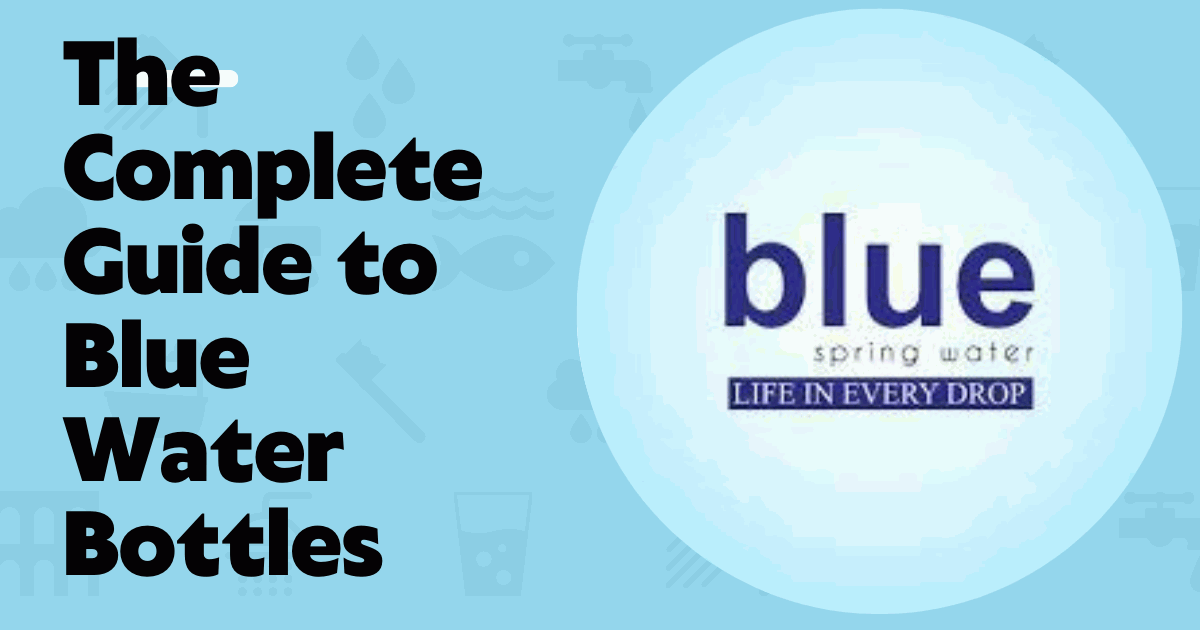Have you ever stopped to admire the cool blue water bottle of your favorite water brand? It’s not just a pretty face! The color choice goes beyond aesthetics and delves into the science of taste and preservation.
What water comes in a blue water bottle?”
In the past, blue glass was a popular choice for water bottles because it offered a touch of elegance and served a practical purpose – blocking sunlight. Sunlight can affect the taste of water, and blue glass acts as a natural barrier. Today, some brands continue the tradition of blue glass for its premium feel and potential taste-preserving properties.
Beyond the practical benefits, blue can psychologically enhance the experience. Studies suggest that the color blue is associated with feelings of calmness and refreshment, making the water appear even more inviting. Of course, let’s not forget the vibrant blue bottles used for popular sports drinks like Gatorade! These bottles not only stand out on the shelf but also subconsciously connect the color blue with the idea of rehydration and physical activity.

Popular Water Brands in Blue Water Bottles
A. Saratoga Spring Water: A Legacy in Cobalt Blue
Saratoga Spring Water is a true icon! They’re one of the few remaining brands in the US that sells their water in beautiful cobalt blue glass bottles. Boasting a long and storied history dating back to the 1800s, Saratoga Spring Water boasts naturally sourced water from springs rich in minerals, contributing to its unique taste. These elegant blue bottles were once a favorite among the wealthy who frequented Saratoga Springs resorts. Today, they’re a treasure worth seeking for water enthusiasts who appreciate a touch of history and a distinctive taste. (Don’t forget to include some high-quality pictures of the Saratoga bottle here!)
B. Ty Nant Sparkling Water: A Taste of Wales in Blue
Ever heard of Ty Nant? This sparkling water hails from the rolling hills of Wales and arrives in a stylish blue glass bottle. The water itself is bubbly and refreshing, perfect for those who prefer a touch of excitement with their hydration. The blue bottle adds a touch of sophistication, making it a visually appealing choice on the table or at a gathering. (Pictures of the Ty Nant bottle would be great here too!)
Ditch Plastic! Unleash the Power of Himalayan Water Bottles
Where to Find Blue Water Bottles: Exploring Options
Disclaimer: We searched high and low for Deja Blue bottled water, but information seems limited. It’s possible it’s a new brand with limited distribution, or perhaps it’s just hard to find. But fret not, water adventurers! Here are some alternative paths to explore:
Similar Blue Glass Bottles: Keep an eye out for other water brands rocking the blue glass look in gourmet grocery stores or online retailers specializing in unique beverages. Expand your search and discover new favorites like Icelandic Glacial or Acqua Panna, both known for their distinctive blue glass bottles and refreshing taste profiles.
Deja Blue Online Presence: If Deja Blue has a website, social media presence, or online store, be sure to mention it here! This could be a valuable resource for potential customers, offering information about their product, where to find it, and the unique selling points of Deja Blue water.
Focus Shift: Let’s dive deeper into the world of blue bottled water! While blue glass is certainly eye-catching, it’s not the only option. Many popular brands use cool blue plastic bottles as well.
Fiji Water: Island Paradise in a Blue Bottle: This brand transports you to a tropical paradise with its delicious water housed in a sleek blue plastic bottle. The ergonomic design and vibrant blue color make it a popular choice for athletes and those seeking a touch of island life in their hydration routine.
Conclusion
We’ve embarked on a journey through the world of water in blue bottles, with a special focus on the elegant blue glass options. From legendary brands like Saratoga Spring Water to the effervescent delights of Ty Nant, blue bottles add a touch of style to your daily hydration routine.
Call to Action: What’s your favorite water brand in a blue bottle? Share your discoveries and recommendations in the comments below! Let’s expand our collective knowledge of these refreshing blue beauties!
Frequently Asked Questions
Why are water bottles blue?
There are two main reasons why some water bottles are blue. Firstly, blue glass acts as a natural barrier, blocking harmful ultraviolet (UV) light rays that could potentially alter the taste of the water by promoting the growth of bacteria or breaking down certain minerals Secondly, the color blue itself can be psychologically appealing. Studies suggest blue is associated with feelings of calmness and refreshment. So, that cool blue bottle might subconsciously make the water inside seem even more inviting!
Where can I find blue glass water bottles?
Finding blue glass water bottles can require a bit of exploration. Here are some tips:
Specialty Grocery Stores: Upscale grocery stores that cater to gourmet or international foods might stock water brands like Saratoga Spring Water or Acqua Panna in their bottled water section.
Online Retailers: The internet opens up a whole world of possibilities! Search for online retailers specializing in unique beverages or international foods. You might discover hidden gems like Icelandic Glacial or other blue glass water brands.
Brand Websites: If you have a particular brand of blue glass water in mind, check their website. They might have a store locator or an online shop where you can purchase directly.
Are there any other benefits to blue water bottles?
Beyond aesthetics and taste preservation, blue glass water bottles offer some environmental advantages:
Reusable: Glass bottles are inherently reusable, unlike disposable plastic bottles. This reduces waste and helps conserve resources. Many blue glass water brands encourage refilling their bottles, making them an eco-friendly choice.
Durability: Glass is a sturdy material that can last for years with proper care. This means you’re not contributing to the ever-growing problem of plastic pollution in landfills and oceans.
